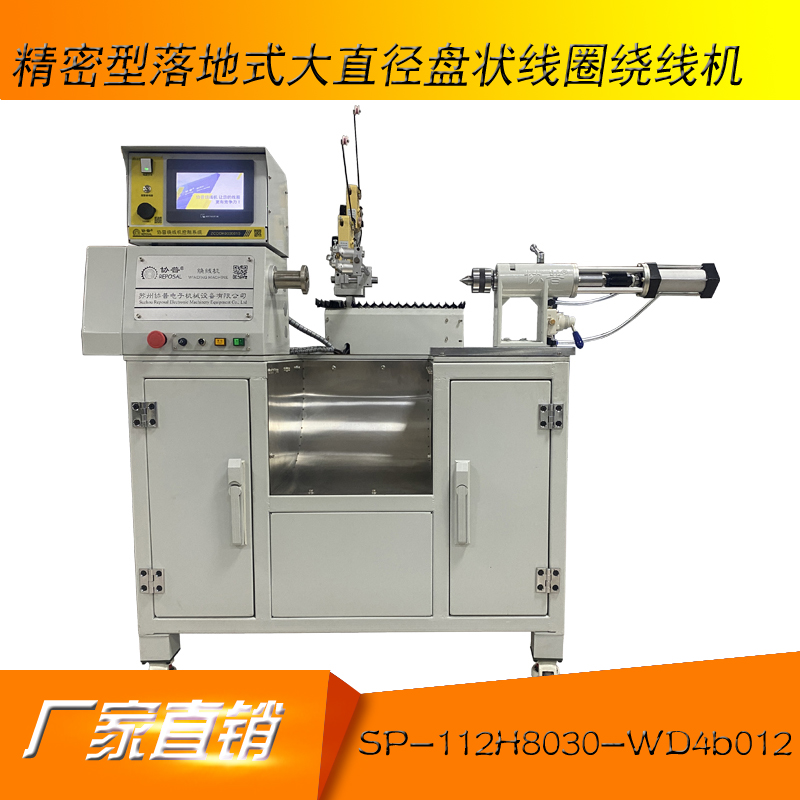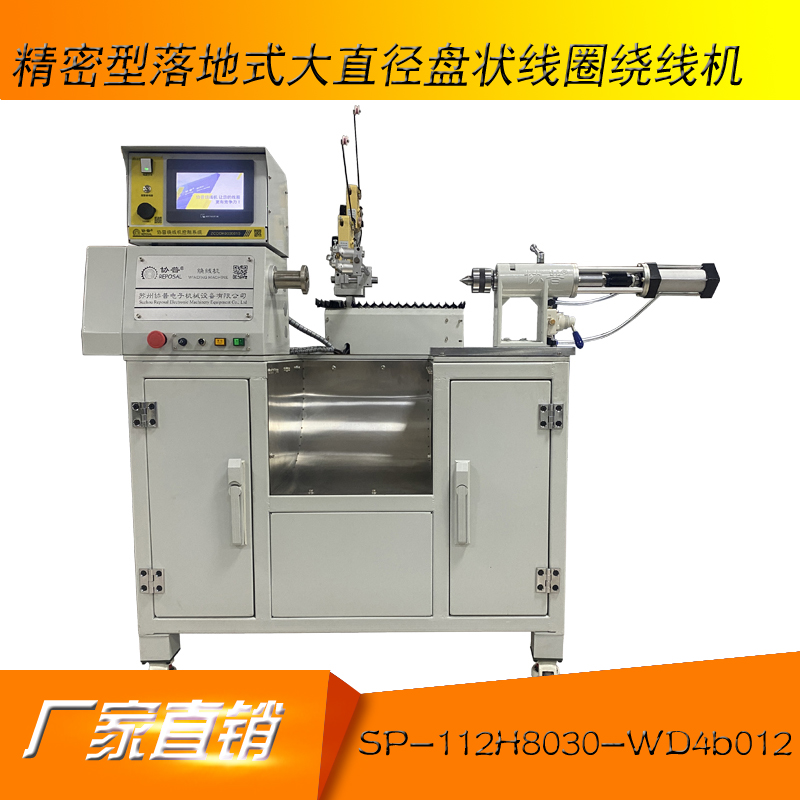Precision Floor-Standing Large-Diameter Disc Coil Winding Machine - Product Description:
From the perspective of winding process adaptability, disc coils possess the following key characteristics:
The coil has an overall disc-shaped structure, with its core technical feature being a significantly large "diameter-thickness ratio" (i.e., the radial dimension is much larger than the axial dimension). This structural feature imposes higher requirements on tension uniformity and winding trajectory control during the winding process, necessitating the use of specialized tooling to ensure winding precision.
Affected by the "large diameter-small thickness" structure, when the coil rotates synchronously with the take-up reel during winding, it is prone to rotational precision deviations due to center-of-mass offset and radial runout. Specifically, this manifests as excessive coaxiality errors, which need to be compensated for through optimization of the winding machine's support structure.
To address the characteristics of disc coils, the winding machine adopts a customized structural design, focusing on solving two core issues: "precision assurance" and "rigid support".
A modular support solution offering a "choice between cantilever beam/simply supported beam" is adopted. Through a composite structure of "two-end positioning + middle precision shaft rigid support", radial play during rotation is effectively controlled. At the same time, the structural stability of the equipment during long-term operation is enhanced, preventing winding errors caused by vibration.
- The base adopts a structural design of "hollowed-out middle for weight reduction + rigid reinforcement around the perimeter". While reducing the overall weight of the equipment, it ensures the support rigidity of the base, avoiding deviations in the equipment's reference precision due to gravitational deformation.
- Both the winding spindle box and the tailstock are manufactured using an integrated casting process. Compared with ordinary welded structures, the cast structure has a more uniform stress distribution, effectively solving the industry pain points of "two-end coaxiality deviation" and "insufficient structural rigidity" in traditional simply supported beam winding machines.
- The wire arrangement mechanism adopts an external independent design, facilitating quick adjustment of wire arrangement spacing and trajectory according to coil diameter and wire gauge specifications, thus adapting to the winding requirements of disc coils of different specifications.
- The core component of the tailstock uses a No. 3 Morse taper. Leveraging the self-locking property and high-precision fitting advantage of the Morse taper, the support rigidity of the tailstock is further improved, ensuring axial positioning precision during coil rotation.
Combined with the production requirements of disc coils, the key parameters of the equipment are set as follows, balancing "process adaptability" and "operational economy":
- The maximum applicable coil disc diameter can reach 800mm, covering the production needs of medium and large disc coils.
- The effective stroke of the wire arrangement mechanism is 300mm, which can meet the wire arrangement coverage requirements of coils with different thickness specifications, and the adjustment precision of the wire arrangement pitch can reach 0.01mm.
- The main drive uses a 1.5kW servo motor. This power configuration can meet the winding power requirements of coils with a diameter of 800mm while taking energy consumption control into account.
- Considering that disc coil winding requires a "low speed-high torque" working condition, the equipment reserves an adjustable reduction ratio interface. It can flexibly match reducers with different speed ratios according to the specifications of the coil enameled wire, realizing the optimal matching of torque and speed, and avoiding wire breakage or uneven tension caused by insufficient power.
From the perspectives of production efficiency, process stability, and operation and maintenance convenience, the equipment has the following prominent advantages:
The core components of the equipment (such as the main shaft, wire arrangement mechanism, and reducer) all adopt industry-universal standard models. At the same time, the equipment control program reserves standardized interfaces, which can quickly adapt to tension controllers and servo systems of different brands. This reduces the difficulty of equipment installation and commissioning, shortens the operation and maintenance response time, and improves the overall availability of the production line.
Through the four-dimensional adaptation design of "winding disc shaft - coil - central shaft - wire feeding tooling", the synchronous operation of all components during the winding process is ensured. This can effectively guarantee the tension uniformity and wire arrangement neatness of coil winding, and reduce the product defect rate.


